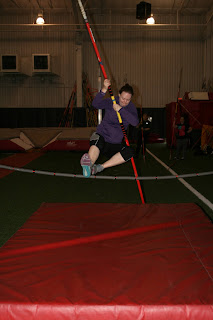Sailing! This has
been the single most difficult event to schedule. Although there are a number of sailing clubs
in the Dallas-Fort Worth area, we’ve had a hard time finding one that can fit
us into their schedule, on our budget.
That match finally came up with Corinthian Sailing Club and youth coach
Greta was happy to take on our challenge.
Olympic sailing has been around since 1896 and the types of
craft used for the events has varied.
There have been 46 different classes used to date! In the 2016 Rio games, there were four
sailing events for the women, including the RS:X windsurfing that we’ve already
completed. The other three events are
all in the “dinghy” class, which means small boats being sailed using five
types of control: sails, foils (daggerboard, centerboard and rudder), trim
(angle of the boat in the water), balance (controlled by weight of the crew)
and route (factoring in wind, obstacles, tide, etc). The boats are also all “monohull” design –
one chassis, so to speak, as opposed to the catamaran style of the America’s
Cup racing boats. The events are the
470, the 49erFX and the Laser Radial.
Our first meeting was mostly an introductory lesson to
sailing. We first sat down and went over
terminology: mast, boom, sail, jib, hull,
centerboard, rudder, tiller, head, foot, luff, leech, roach, block, clew, tack,
jibe, windward, leeward, reach, run… I
could go on and on. We were on overload
by the end of our lesson! It was
interesting to see how much education is required. Even finding out how many parts there are on
a sail was fascinating to me.
Next, we headed over to take a look at a couple of the boats
that we’d be using in future lessons so that Greta could point out the
differences.
 |
| Figuring out what lines move what parts of the sail |
At the end of the lesson, we headed out on the water. Greta chose to take us out on a Flying Scot –
a larger boat all five of us could comfortably fit in to get a feel for the
water and start taking turns manning the helm.
 |
| The Flying Scot |
While one person steered the boat, two of us manned the smaller jib
sail, each pulling it and locking it into place on the correct side of the
boat. With the nice light wind we had on
the lake, it was a nice trip close-hauling (sailing at an angle, into the wind)
up the lake. We quickly discovered that
the “telltales” are the key to steering.
On each side of the main sail and jib, there are small streamers
attached. On the port side of the boat,
the streamers are red. On the starboard
side, they are green. The two colors are
mounted at the same location, one slightly below the other, so that you can see
both. They should be flowing straight
aft, if the boat is sailing properly. If
one, or both, are flopping around, it tells you how to trim the sail. Small corrections to the tiller result in
that smooth stream of air flowing over the sail. There is also a “no-go” area like we had in
windsurfing – where you allow the sail to line up perpendicular to the
wind. Although it’s noisy as the sail
flaps in the breeze, it stops the boat quite quickly since no wind is being
caught in the sail.
 |
| RA glances at the telltales while at the helm |
Greta even showed us some of the more extreme ways to move
weight about the craft, including leaning out over the edge of the boat, using
foot straps to counterbalance. This was
a bit disconcerting for me – I didn’t like being on the lower side of the boat,
my upper body immediately sitting forward as I felt like I would get dumped
right out of the boat!
 |
| J holding a jib line - Coach was willing to lean a bit further out |
What surprised me was when we turned to head back to the dock. Greta mentioned that you can only sail as
fast as the wind is blowing. I figured
we’d turn the sail, catch as much wind as possible and zoom back. Instead, we leisurely floated back to the
dock with the wind and current carrying us back, giving us time to ask more
questions.
This was a fun first lesson.
Next time, we’ll start out on the Flying Scot once more, then move on to
one of the Olympic style boats!














